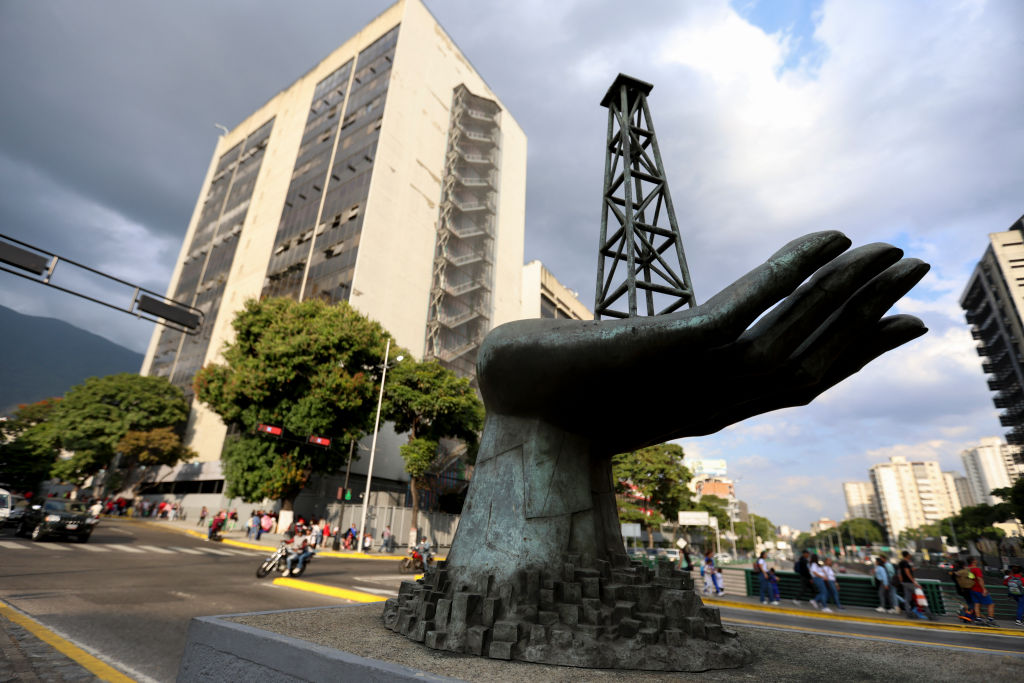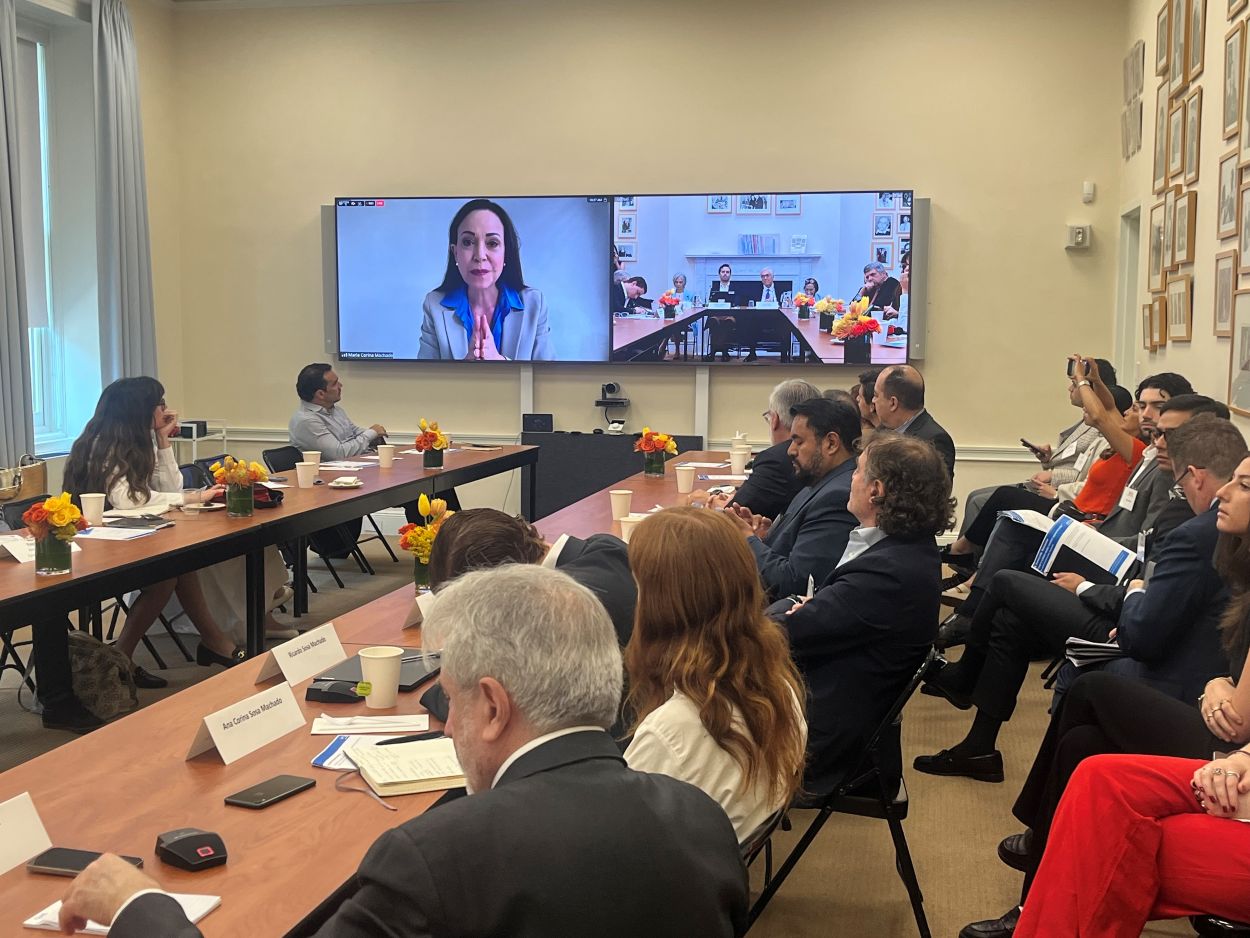Mexico Update: Taking on Education and Energy Reforms
Mexico Update: Taking on Education and Energy Reforms
Despite protests in the country’s capital against education and energy reforms, Mexico’s Congress approved the former and plans to debate the latter.
Nine months ago, President Enrique Peña Nieto’s presidency began with an agreement between Mexico’s three main political parties to launch an ambitious reform package. Known as the Pacto por México, the accord covers 95 initiatives in areas ranging from telecommunications to fiscal policy. On September 2, the president delivered his primer informe—remarks covering the first nine months in office—while the country faced protests over key areas of the reform package. In fact, promises of a major Mexico City demonstration by teachers opposed to the education reform on September 1 led Peña Nieto to postpone his state of the union until the following day. Meanwhile, opponents of a recently announced energy reform pledged a march in the capital on September 8.
Despite the protests, Mexican legislators approved the education reform this week and are preparing to take on energy reform in the fall. AS/COA Online checks in on where the education and energy reforms stand.
Mexico’s Congress Moves ahead with Education Reform
Education reform was one of the first areas of the Pacto por México that the Peña Nieto government and legislators picked up. Even with improvements in enrollment rates over the past decade, studies show Mexico lags when it comes to education. Only 36 percent of Mexican adults have a secondary education, which lies well below the OECD average of 75 percent. Mexico’s education expenditures are close to the OECD average but it leads in spending on teacher salaries while falling short in comparison to spending per primary and secondary student.
Initially proposed and approved in December 2012, the reform includes measures to create an independent government agency that oversees a teacher evaluation system. In addition, the reform seeks to raise the portion of students who complete middle school to 80 percent and those who complete high school to 40 percent The reform will also allow for the government to conduct a census to gain an accurate count of students and teachers—information previously under the control of Mexico’s powerful teachers union and which some say led to thousands of phantom teachers on the payroll. Peña Nieto signed the education reform in February, but the measure required Mexico’s Congress to draft and ink secondary implementation laws in order for the reform to take effect.
In August, as Congress began to near its vote to implement the reform, the National Coordinator of Educational Workers (CNTE) began leading large-scale protests in the country’s capital, using methods such as blocking access to Congress in an attempt to stop votes on the law. At the heart of protester demands lies a secondary law required for the reform’s implementation—the General Law of Teaching Service, initially presented on August 14. The law outlines new requirements for teachers, including evaluations and merit-based promotions. The evaluations would include a three-strikes-you’re-out principle; teachers who fall short on evaluations three times would lose their positions or get placed in administrative posts. The legislation also seeks to end a practice allowing people to pay for teaching posts or pass those posts along to their children. Moreover, teachers who miss three consecutive days of work could face dismissal—an important detail for teachers who abandon their jobs to stage protracted demonstrations. The CNTE contends that measures like mandatory evaluations ignore educational challenges in poorer states such as Guerrero and Oaxaca, from where many of the demonstrators and CNTE union members hail. But others say concessions on the General Law of Teaching Service weakened the overall education reform, given that individual evaluation results will not be made public and teachers will be able to contest them.
Despite the protests—and threats of more to come as the CNTE seeks to join forces with upcoming demonstrations against the proposed energy reform—Mexico’s Chamber of Deputies approved the General Law of Teaching Service early in the morning of September 2 by a vote of 369 to 69. The Senate followed suit two days later, passing the law with 102 in favor and 22 against, ushering through the education reform. In terms of the three major political parties, the governing Institutional Revolutionary Party (PRI) and the conservative National Action Party (PAN) largely voted in favor, while the left-leaning Party of the Democratic Revolution (PRD) saw its votes split in the Chamber and the Senate.
Secretary of Education Emilio Chuayffet congratulated Congress via Twitter for pushing the reform forward and revealed that the teacher evaluation process would begin in July 2014. "The inheritance and sale of teaching posts are over," he tweeted, also saying: “With the education reform, to earn more, a teacher won’t have to do more administrative work but will simply have to be a better teacher.” However, the new National Institute for the Evaluation of Education—charged with overseeing the teacher evaluations—cautioned that evaluations may uncover the depth of Mexico’s educational deficiencies but will not necessarily improve or address the causes of those problems.
In terms of the Pacto por México, energy reform is arguably the most anticipated, and comes 75 years after President Lázaro Cárdenas led the expropriation of Mexico’s oil sector. On August 12, Peña Nieto presented an energy reform that seeks, among other measures, constitutional changes to Articles 27 and 28 to allow for profit-sharing energy agreements between Mexico’s government and the private sector. As well, fiscal changes would reduce the government’s dependency on Pemex’s revenues, allowing it to reinvest these funds. In mentioning Article 27, Peña Nieto invoked Cárdenas, saying the reform follows that president’s original wording of that section of the Constitution. In his remarks, Peña Nieto stressed that both Pemex and the Federal Electricity Commission would remain wholly government-owned.
The PAN, PRD, and PRI agree that Mexico’s energy sector must be modernized. Even as oil production accounts for over a third of the country’s revenues, state oil monopoly Pemex has been plagued by operating losses, outdated technology, and reduced output. For the past eight years, production has declined, leading the government to warn that Mexico could become a net oil importer by 2018. But even as the three main parties agree that changes are needed to reverse Pemex’s course, their proposals differ. The PRD opposes constitutional changes that would allow for private sector participation via contracts or concessions. Conversely, the PAN advocates modifying Articles 25, 27, and 28 in order to allow for increased private sector participation through royalty-paying concessions. While the president and his party the PRI coincide on requiring constitutional changes to for more private sector participation, Peña Nieto’s proposal is less aggressive, giving companies a share of profits rather than production. Significantly, the three parties agree that Pemex must be given fiscal autonomy, so that it’s able to productively reinvest its revenues. Currently, 72 percent of Pemex’s revenues go to the federal government.
The Pacto por México set 2014 as the deadline for legislative approval of energy reform. The reform is slated for discussion during the current congressional session, which runs September 1 to December 15. If the energy reform is to modify the Constitution, as both the PAN and PRI propose, the initiative will need the support of two-thirds of the legislature. This works out to 85 of 128 senators and 334 out of 500 congressmen. Once approved federally, a majority—or 16 out of 31 states—must pass the reform.
The PAN and PRI, in agreement on several portions of the reform along with their allies, appear to have more than enough votes to pass a reform, with 71 percent support in the Chamber of Deputies and 77 percent in the Senate. Though the energy reform could gain approval without any PRD support, figures such as the PRI’s coordinator in the Senate Emilio Gamboa have stated that they will do their best to work with the PRD. Through the Consejo Coordinador Empresarial, a leading Mexican business advocacy group, the private sector has also expressed support for the reform.
However, the reform is not without its hurdles. National President of the PRI César Camacho has said his party would not support a watered-down reform. Furthermore, the 38 PAN senators have stated that an electoral reform—which includes legislative reelection and the creation of a National Electoral Institute—must be approved before taking on energy reform. Meanwhile, ex-Mayor of Mexico City and former presidential candidate Andrés Manuel López Obrador has pledged to lead protests against the reform on September 8 and teachers protesting the education reform indicated they would join. National President of the PRD Jesús Zambrano announced a mobilization on September 15 in support of his party’s initiative. Importantly, elections for the new national president of the PRD are in 2014 and aspirants include ex-Mexico mayors Marcelo Ebrard and Cuauhtémoc Cardenas—both opponents of constitutional changes included in the PAN and PRI proposals.








